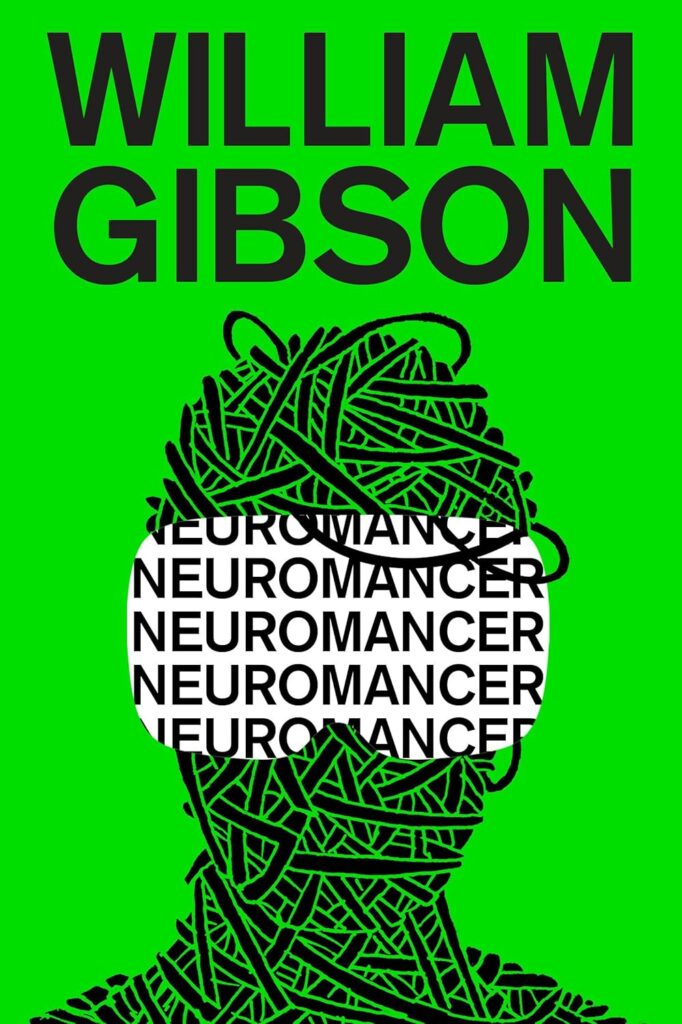
Blistering verdict: Neuromancer doesn’t predict the future—it jailbreaks it. William Gibson plugs you into a neon-slick, rain-slicked world where data has gravity, money moves at the speed of light, and the line between human and machine is just another corporate asset to be negotiated. It’s fast. It’s razor-sharp. And four decades on, it still crackles like a live wire.
Spoiler-free recap (no ICE burned, promise)
Meet Case—a burned-out “console cowboy” who once rode the matrix like a god until he crossed the wrong people and lost the only thing that mattered: his ability to jack in. He’s offered a dangerous second chance by a mysterious patron with deep pockets and deeper secrets. Enter Molly, a mirror-shaded street samurai with retractable razors and zero patience for anyone’s nonsense. The job? A multilayered, globe-hopping (and orbit-hopping) heist threading megacorps, black-market biohacks, and an AI problem that’s less “glitch” and more “philosophical earthquake.”
The plot moves like a hot knife through black ice—tight, propulsive, and always one layer more ambitious than you think. Every chapter ups the stakes; every alleyway has a camera; every ally might be a contractor. You don’t need spoilers. You need a seatbelt.
Why this book still matters (and why geeks keep handing it to friends)
- It gave us our mental model of the net. Gibson’s “cyberspace” isn’t just a word—it’s an interface, a mythos, a feeling. The luminous grids, the consensual hallucination of a shared data world? That’s the cultural operating system we installed long before broadband.
- It forged the cyberpunk aesthetic. Street-level grit meets orbital decadence; chrome and sweat; hackers and mercenaries threading the seams of empire. If you love The Matrix, Ghost in the Shell, Cyberpunk 2077, or Mr. Robot, you’re drinking from this well.
- It nailed corporate power as world-building. Megacorps behaving like nations. Security as religion. Branding as surveillance. In 2025, tell me that doesn’t feel uncomfortably like a user agreement we all clicked.
- It treats AI as character, not prop. Neuromancer asks the questions we’re still arguing about in boardrooms and labs: autonomy, constraint, alignment, and what “self” means when the self can be copied, merged, or monetized.
- The prose is pure overclocked poetry. Gibson writes like he’s soldering language: compressed, glittering, and purpose-built. The sentences hum; the metaphors bite; the world feels legible and alien at once.
What hits different in 2025
- Identity as a login. Case isn’t just locked out of systems; he’s locked out of himself. That anxiety—who are we without access?—is the backbone of our cloud-tethered lives.
- The gig-hacker economy. Contractors, fixers, “teams” assembled like temporary code branches. It’s Upwork with thermoptic shades.
- Biohacking & upgrade culture. From dermal mods to black-clinic tune-ups, the book treats the body like firmware—exactly how today’s wearables, implants, and nootropics culture wants you to think.
- Algorithmic power. Replace “AI” with your favorite recommendation engine and the social physics hold: it watches, it optimizes, it nudges. The ethics still sting.
How to read it (and love it)
- Surf the jargon. Don’t stop to define every acronym. Let the context teach you like you’re a rookie riding shotgun with veterans.
- Trust the city. The settings—Chiba City, the Sprawl, orbit—are more than backdrops; they’re tutorial levels. Watch what they reward and punish.
- Hear the bassline. The book is paced like a heist film. When it slows, it’s loading a bigger payload. When it sprints, hang on.
If you’re this kind of reader, this book is your jam
- You love high-concept, high-velocity fiction that respects your intelligence.
- You care about tech culture’s DNA—where our metaphors and nightmares came from.
- You’re a world-building nerd who wants settings that feel lived-in, not wallpapered.
- You’re into AI, hacking, and systems thinking and want a story that treats them as more than shiny props.
The influence blast radius
Neuromancer is ground zero for the cyberpunk sensibility: the hero is small, the system is massive, and victory looks like carving a human-sized space in a machine-sized world. Its fingerprints are everywhere—console cowboys inspiring dev culture; “ICE” as the vibe under every security audit; fashion, music, and UI design that still chase its cool. Even the way journalists write about breaches and “entering the network” leans on Gibson’s visual grammar. Read it and you’ll start seeing the code behind the cultural interface.
After you jack out: what to read next
- Count Zero and Mona Lisa Overdrive (finish the Sprawl Trilogy—richer world, expanding consequences).
- Burning Chrome (short stories that sharpen the vision).
- Adjacent canon: Neal Stephenson’s Snow Crash (satire-powered rocket fuel), Pat Cadigan’s Synners (media and minds), and Rudy Rucker’s Ware series (weirder, wilder, wonderfully so).
Final verdict
Neuromancer is essential reading—full stop. It’s the rare novel that changed the language we use to talk about technology and remains a pulse-pounding ride. If the Internet is the city we all live in now, Gibson drew the first street map that felt true. Pick it up for the thrills; keep it on your shelf for the ideas that won’t let you go.
Ready to jack in? Grab Neuromancer in paperback, ebook, or audio—however you mainline stories—and let it rewrite your mental firmware. (Some links on my site may be affiliate links, which help support the work at no extra cost to you.)
The Eclectic Educator is a free resource for everyone passionate about education and creativity. If you enjoy the content and want to support the newsletter, consider becoming a paid subscriber. Your support helps keep the insights and inspiration coming!